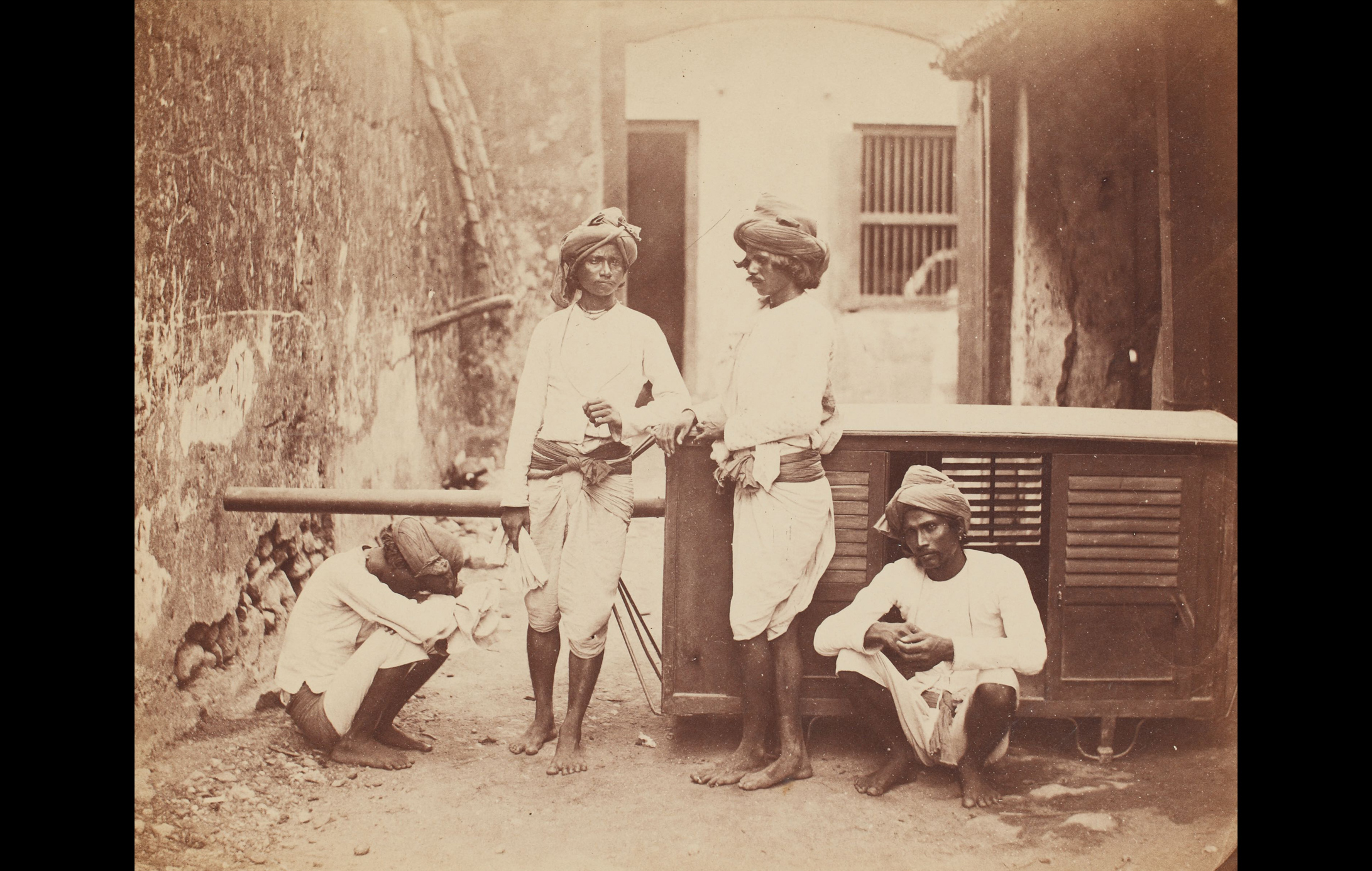
This photograph of the Palanquin Bearers was taken by William Johnson in Bombay.
The root-word for the English ‘palanquin’ is the same as the one for the Hindi ‘palang’: ‘palyanka’, Sanskrit for bed. Baked into the word itself is a promise of comfort. Palanquins were the transport of choice for wealthy travellers in 18th- and 19th-century India. Carved out of wood, well-ventilated and often richly ornamented too, ‘palkees’ offered privacy, luxury and security, important considerations for those going on long or arduous journeys. They were typically carried by male bearers, who largely belonged to Dalit-Bahujan-Adivasi communities. These men developed their own shorthand phrases to communicate easily while on the road, warning each other of hurdles and turns. During the British Raj, palanquins were controlled by the East India Company’s Postal Department or by District Collectors; booking one could take about 10 days and the Head of Postal Department had to be informed of every proposed stop along the way.
Title
Palanquin Bearers, BombayPeriod
1855-1862Photographer
William JohnsonDimensions
H: 19.7 cm x W: 24.5 cmAccession No.
2016.1.49Genre: Photography
